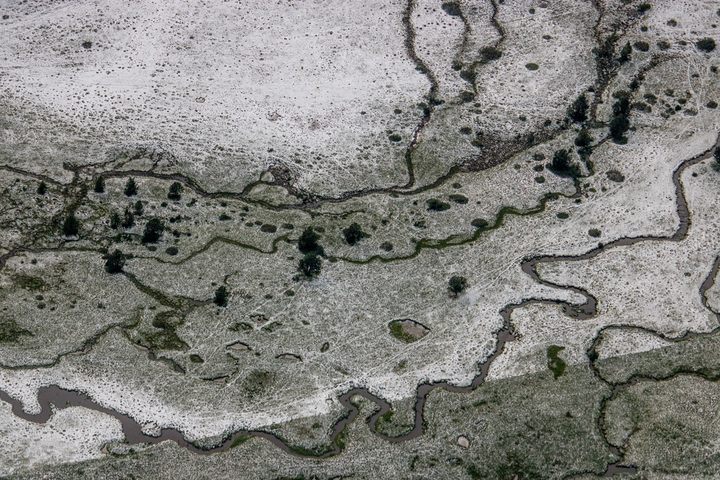
See What the Pyrenees Look Like From an Antique Airplane
The mountain range offers a wealth of gorgeous, unexpected textures.
Aerial photography is a fusion of two natural interests for me: ground-based amateur photography and a love of flying World War II–era Piper Cubs that I learned from my grandfather.
My first aerial interests were mountains and coastal areas in North Carolina—subjects whose scenic value is fairly obvious. That was until one day in the winter of 2012. On the way to the Great Smokies, I happened upon an arresting sight below. Tractors in the scrubby foothills were tilling the red Carolina soil into patterns and textures that were remarkably beautiful. I isolated them using my zoom lens—and from that moment on, a new genre of photography was born for me.
In the ensuing years, I would look for interesting agricultural patterns wherever I could find them. It was a fickle process, much like chasing butterflies; just because I looked harder didn’t mean I would find more.
Eventually, as I moved to the Rockies, I decided to add naturally occurring textures and patterns to my work. But the same fickleness remained in the process. I found that it was best to focus on finding scenic landscapes, then harvest whatever textures I happened to find along the way.
In 2016 I moved to the Pyrenees, taking the same airplane with me. Spain, and to a lesser extent France, changed the nature of how I located textural images. Instead of a virtually random encounter set against other terrain, the Pyrenees feature such a density of aerial textures that I struggled to keep track of them all. It didn’t take long before I decided to turn things upside down and start specifically looking for texture, which gave rise to this current project.
The Pyrenees—a mountain range that forms the boundary between Spain and France and contains the entire nation of Andorra—reach as high as 11,134 feet, touch the Atlantic and the Mediterranean, and feature a few remaining glaciers. Unlike what most people think of when they imagine the Iberian Peninsula, it’s a rugged combination of landscapes—encompassing scenery one would expect to find in Virginia, New York, Utah, Montana, Wyoming, and Idaho—with a remarkable array of variety.
These images show just a few of the aerial textures on view.
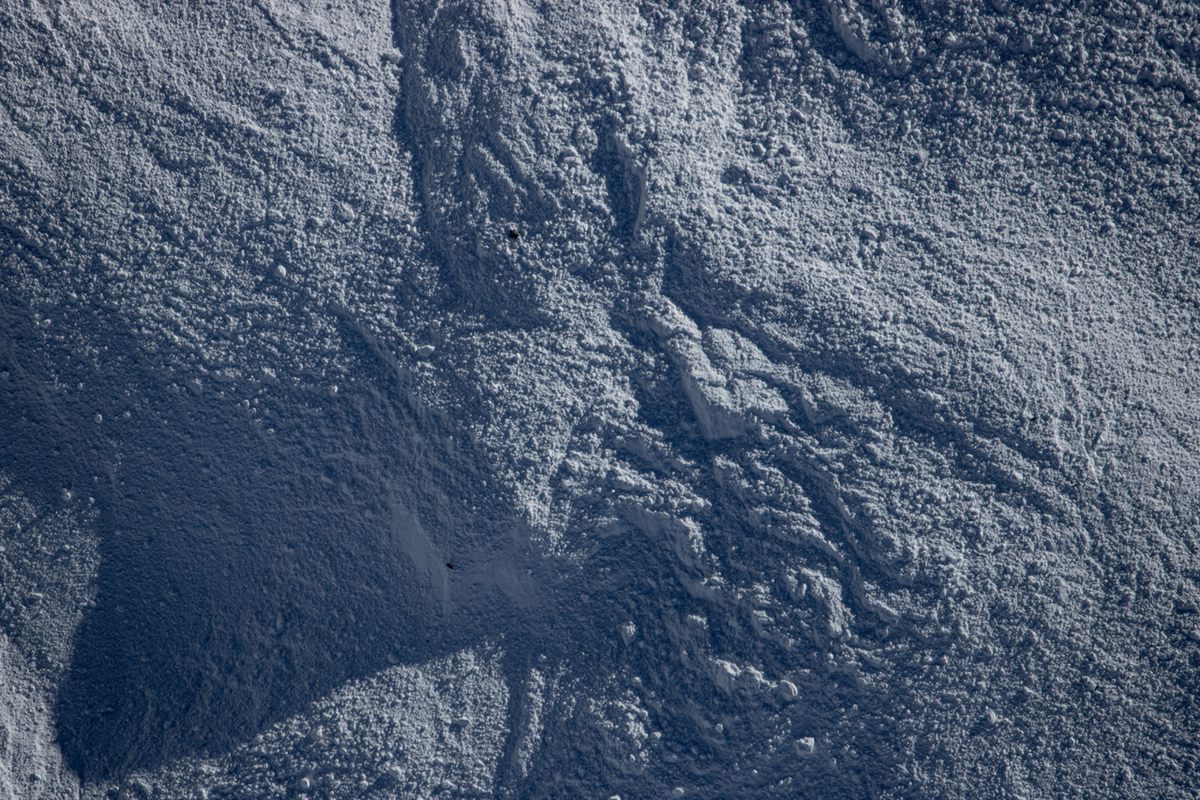
Avalanche – Vall d’Aran, Spain
Small avalanches are relatively common in the Pyrenees. Fortunately, larger slides that can do lasting damage are less frequent here than in some other mountain ranges. After a snowfall of over six-and-a-half feet, a number of large avalanches occurred in the Vall d’Aran of northern Spain. This image shows where one came to rest in a high mountain meadow.
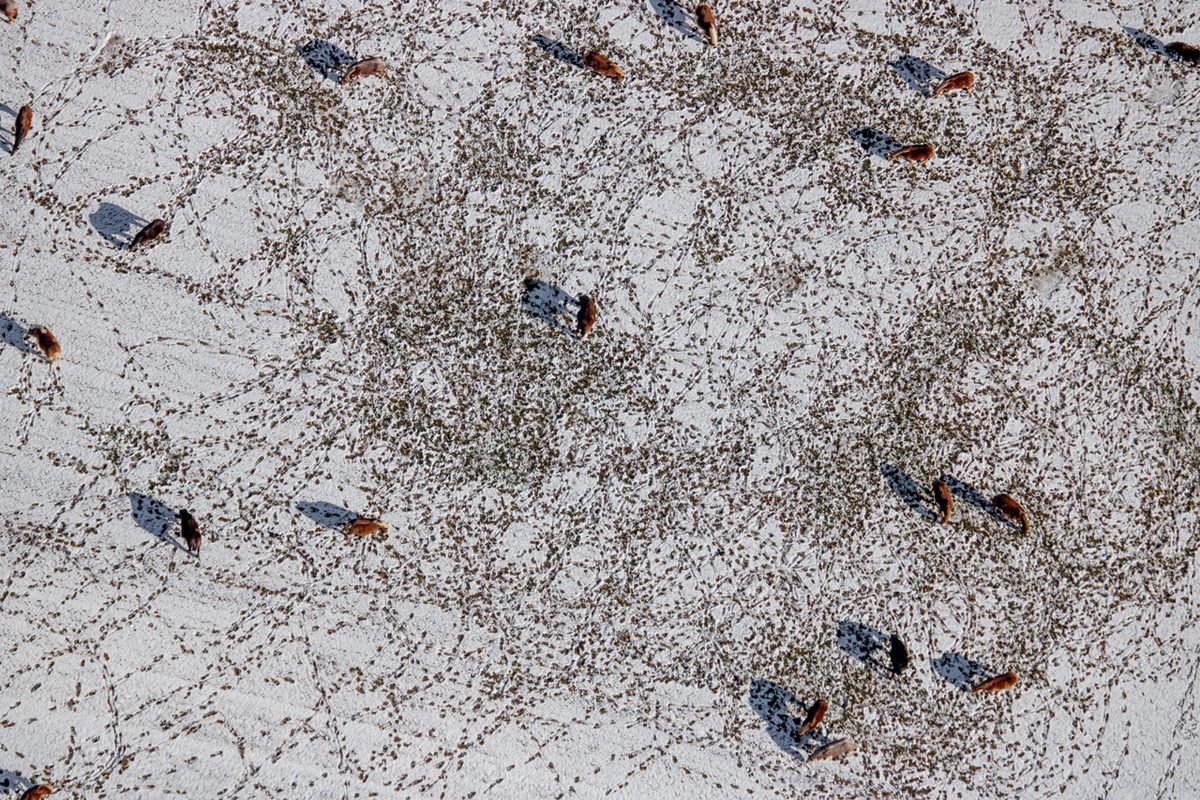
Cows in snow – Talló, Spain
Transhumance, a seasonal agricultural approach, is practiced in the Pyrenees, as it is in the range’s larger cousin, the Alps. Livestock are led into valleys above the tree line during the summer, then gradually down to lower altitudes as autumn progresses, for eventual wintering at village elevations. In the Pyrenees, snow accumulates at a high valley level (3,000–4,000 feet) five to 10 times per year. When that happens, cattle wander around in it, mostly eating straw that’s furnished by farmers. I’ve always wondered if there’s some mathematical pattern to cow wanderings. From looking at tracks in the snow, it appears that there is not.

Fields – Age, Spain
Inches from the Spanish border with France, wheat fields dotted with purple wildflowers gleam before an early summer harvest. An aerial view of the property lines that divide European farming operations tends to present either a Picasso-esque swirl of contours or, as in this case, an agricultural game of Tetris. I’ve been told that because Spanish law requires parents to leave two-thirds of their estates to their children, fields are often hacked into small and strange parcels—a pastoral way to achieve that legal objective as generations pass.

Nieve Beret 1800, Spain
Located in the central Pyrenees near the border with France, the Vall d’Aran receives ample snow on its high-altitude ridges, which feature a number of ski resorts. After a large storm, skiers hike off the pistes to a summit and carve trails on the way down. While I know the feeling of sailing on a cloud of powder, I hadn’t considered what ski tracks look like until I had a chance to see them from above.

Embalse de Mediano, Spain
The Spanish side of the Pyrenees is drier than the French, but many rivers have their headwaters there. The Spanish have created reservoirs to capture mountain rain and melting snow for agricultural use at lower levels. Each of these reservoirs has an iridescent aqua color, likely due to limestone sediments carried by the rivers that feed them. In the central Pyrenees, the Embalse de Mediano is formed among light-colored soils, which winds and lapping water mix into aqua-colored water, creating intriguing color patterns on the surface.

Sèrra des Armèros, Spain
After a six-and-a-half-foot snowfall, one expects to see a blanket of white so serene and featureless that it can be hard to tell the nature of the surface. For some reason, snow settled into this textural pattern. I’m inclined to ascribe the pattern to some rainfall or briefly warmer temperatures. But the storm system in this case brought incredibly cold air and extreme winds, so it remains a mystery. I have not seen a pattern like it anywhere else.
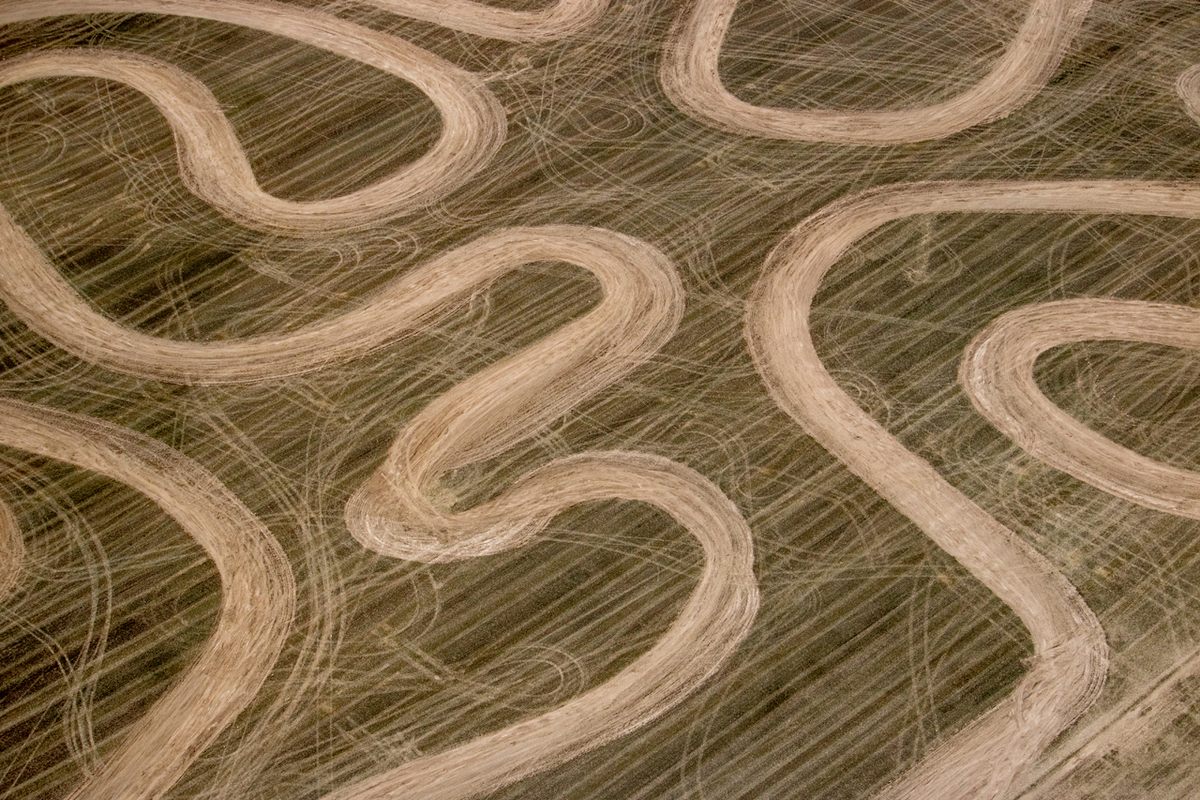
Improvised dirt-bike track – Fontanals, Spain
If I hadn’t spoken to someone who could explain this pattern to me, I would have assumed that whoever farms this field had dosed himself with LSD before hopping on his tractor. After the wheat harvest each year, but before the next crops are planted, people in the town traditionally turn this large field into an improvised dirt-bike track. Racers go positively mad speeding on the track for about a week. When they’re done, the farmer returns to plow it and plant the next crop. This tradition can be found in the high-altitude valley of La Cerdanya in the Eastern Pyrenees—one of the only east-west valleys of its type in Europe.

Sèrra de Bedrera, Spain
Elimination of scale presents this image as a flat piece of terrain with drifted snow. In reality, it’s an extremely steep mountainside, with the snowdrifts that formed pointing up the mountain, against gravity. On the highest ridges of the Pyrenees, strong winds during snowstorms often blow up the mountains on one side and down on the other, leaving snowdrifts as evidence of the wind’s direction and strength. In the lower left of this image, rime ice has formed on the rock—a phenomenon that occurs when clouds and wind impact physical surfaces in certain temperature bands.

Doing donuts in the snow – Sanavastre, Spain
The Spanish have a penchant for having fun. In this case, someone chose to take a vehicle into a farm field and let her rip. I’d never given any thought to what the final product of that would look like until I happened across this field, where a recent snowfall had allowed the driver to leave a record of his merrymaking.





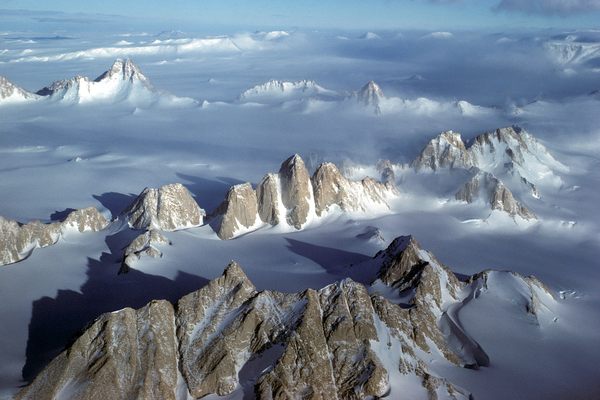





Follow us on Twitter to get the latest on the world's hidden wonders.
Like us on Facebook to get the latest on the world's hidden wonders.
Follow us on Twitter Like us on Facebook